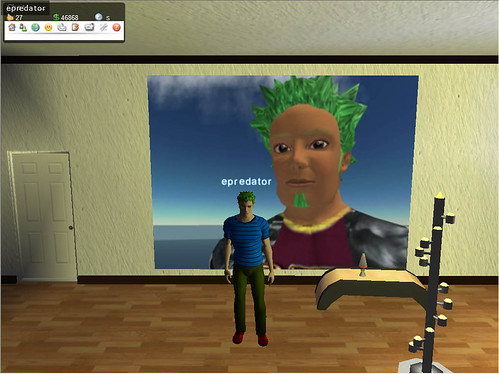I have had lots of conversations recently about where things are, where they are hosted what platform they are on. This applies not just to metaverse conversations but photos, films and mobile devices.
Whilst there is clearly a current technical need for things to exist somewhere, either as part of a service or just personal storage the concepts of grid computing and peer to peer networks are likely to start to help us not consider where and what version, but just what do we have. This applies in a business and creative context.
Take this image for instance from snapzilla (which I read is about to have a major upgrade too) 
Now, does it matter the path we took to get this photo? It happens to be a real life photo of Stae Youngs car on a texture in Second Life with epredator potato standing in front of it and the snapshot mailed through to snapzilla.
The services are all there to choose the way to make this composite image, and it also represents a point in time event in a metaverse.
However, I could have used photoshop to composite up the photo. I could have used green screen and a video to matte the two together the list goes on.
The point is the image is there, has some provenance and story behind it as part of a conversation Stae Young and I were having on a private Second Life island. Its now part of this blog entry so is being built upon.
If we can move data and creations around like this, in an easy way then we are able to combine things, as with mashups, to create things we need wherever or whenever we need them.
Does it matter is this is Second Life with a picture in it?, or some metaverse as a plugin in a browser? No not really. It matters that it was quick, simple and the “place” we both happened to be at the same time to allow us to have and document this conversation and collaboratively produce this picture.





